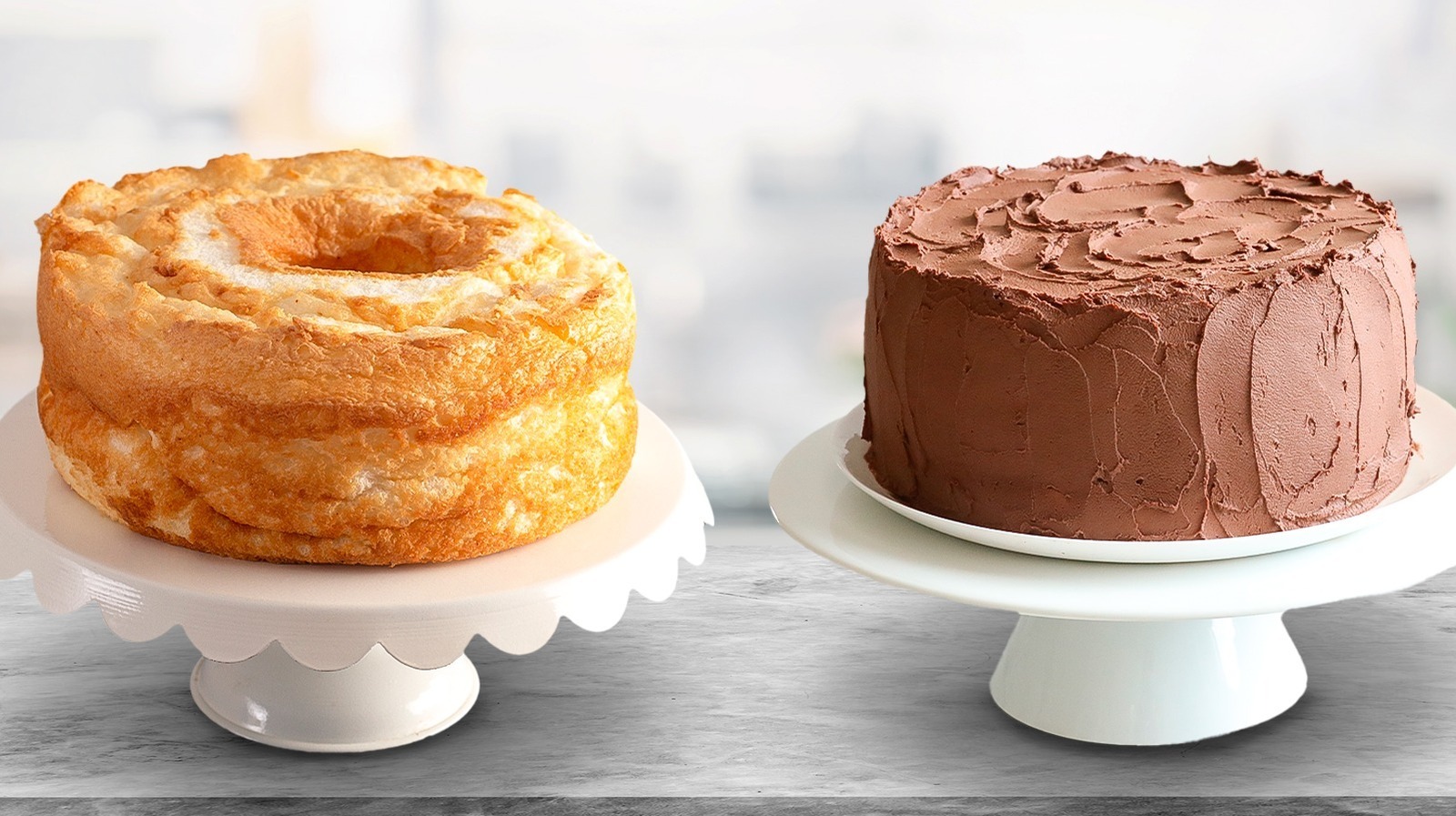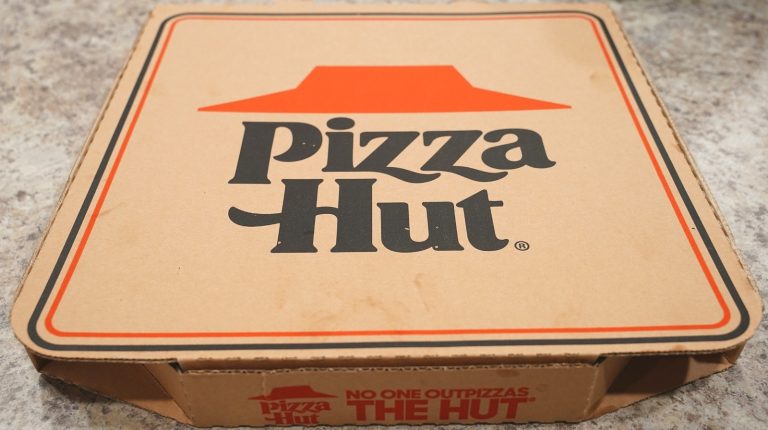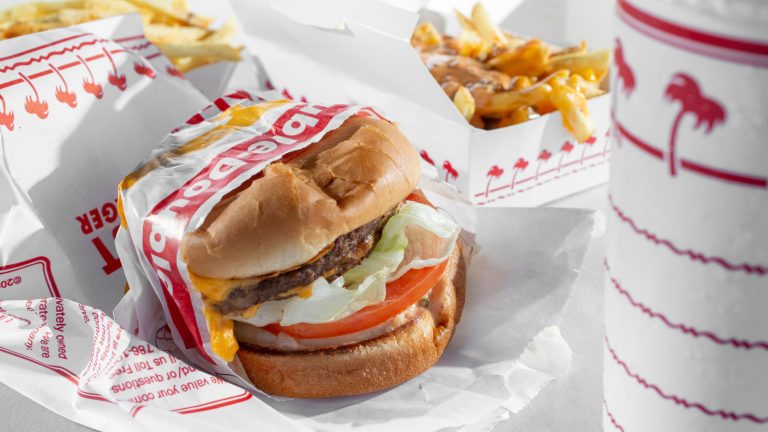We may receive a commission on purchases made from links.
If you look at the names of angel food cake and devil’s food cake and assume they must have lots of differences, you’d be correct. The differences are far greater than just assuming that one is vanilla-flavored and the other is chocolate-based. They’re as different as day and night, black and white, and, well, angels and devils. These two delightful desserts are drastically different takes on the idea of a cake, making it difficult to choose a favorite.
Angel food cake and devil’s food cake go back a long way. Though their origin is murky, they sometimes appeared together in print. This suggests that people have been comparing these two cakes for a long time. Besides the names that suggest the contrast between symbolic innocence and temptation, there are many other things that make these two cakes different. We’ve looked at everything from their origins and ingredients to the cooking methods, flavor, and texture to show all the differences between devil’s food cake and angel food cake.
What is angel food cake?
Angel food cake is similar to but not quite like a classic sponge cake, and it may have been inspired by earlier cakes that were known as the silver cake and snow drift cake. It’s also sometimes referenced as ice cream cake or Dutch wedding cake.
Angel food cake is a springy, light cake with a white interior. While you’d be forgiven for thinking angel food cake is a sponge cake because of all the eggs it has, there are some big differences. For one thing, angel food cake only uses egg whites instead of whole eggs, which makes the cake light, fluffy, and airy. It never attains the somewhat dense texture we typically associate with a sponge cake. And while both have flour and sugar, angel food cake never has any added fats like sponge cake sometimes does. The lack of added fats like butter is also what makes it different from cakes like the snow drift cake (recorded in 1871) and the silver cake (dating from 1881). Skipping egg yolks further differentiates it from the silver cake.
What is devil’s food cake?
On the other hand, devil’s food cake is a chocolate cake. While there are plenty of chocolate cakes out there, devil’s food cake has a few distinctive elements.
What sets a devil’s food cake apart from other chocolate cakes is how dark it is. This chocolate-frosted chocolate layer cake tends to have a fluffier texture than ordinary chocolate cakes because it has more baking soda than most other chocolate cakes. Usually, the classic version features chocolate frosting on top of chocolate sponges, and there are sometimes strong ingredients like coffee or sour cream in the cake batter to make it even richer. Sometimes, it also contains nuts. It once even included red food coloring like a red velvet cake to be more devilish. The recipe has evolved a bit over the years and though we don’t have a one-size-fits-all recipe, the cake nowadays uses a lot of cocoa powder and dark chocolate to appear almost black when you cut into it.
They seem to have originated at different times
While angel food cake and devil’s food cake sound like they should have been created side by side, it seems angel food cake came along first. However, there is no definite evidence to confirm this.
There are several theories about where angel food cake originated. Some think it came from the Pennsylvania Dutch, especially since there were a lot of angel-food-style cake molds made in southeastern Pennsylvania in the early 1800s. The first known recipe for angel food cake was in “The Home Messenger Book of Tested Receipts” in 1878. However, a 1968 book called “The President’s Cookbook – Practical Recipes from George Washington to the Present” mentions a 1883 cookbook that attributed the cake to an Atlantic Coast bakery whose legendary baker supposedly got the recipe from a friend in India. The increasing popularity of this cake in the late 1800s may have been because of the invention of the rotary beater, which made whipping all the egg whites in the recipe easier.
Devil’s food cake came along a little later and its origins are also a matter of debate. While there are some rumors that the cake originated at the Waldorf Astoria Hotel in the 1950s, they have been squelched by the fact that recipes for both cakes showed up side-by-side in an 1898 Hagerstown Exponent newspaper article. Plus, a recipe for devil’s food cake was also printed in “Mrs. Rorer’s New Cook Book” in 1902.
They provide different symbolism
These two cakes have shown up side by side since the late 1800s and represent complete opposites in the name and appearance. While you may haven’t thought about this before, these cakes represent dark versus light, and, in a way, oppose innocence and temptation.
On one side of the spectrum, there’s the angelic angel food cake. The ingredients in an angel food cake recipe are all white except for the vanilla extract. So, while the exterior undergoes the Mailliard reaction and turns light brown, the interior is pure white. White color and angels are symbols of purity, innocence, good, and holiness, with angels in multiple religions being seen as messengers of God. Essentially, this symbolism points to angel food cake as being perhaps the more innocent of the two.
On the other side of the spectrum, there’s the sinfully dark devil’s food cake. All the chocolate (and sometimes coffee) that you’ll typically come across in modern devil’s food cake recipes makes the cake extremely dark, sometimes bordering pitch black. As the devil is often associated with darkness and black color is often seen as a symbol of death, evil, and generally tends to have some unfounded negative connotations, devil’s food cake is a representative of something tempting, indulgent, and perhaps somewhat sinful.
Devil’s food cake is far sweeter than angel food cake
One of the few times devils are sweeter than angels is when they’re cakes and not religious entities. It turns out that there’s a huge difference in sweetness between these two cakes.
Most recipes for angel’s food cake start with approximately one and a half cups of sugar. There’s no sweet frosting. So, unless you decide to add a dollop of whipped cream or some fruit, you won’t have more than around 20-25 grams of sugar per serving. So, it’s not terribly sweet.
Meanwhile, a devil’s food cake requires quite a lot of sugar in both the cake and the frosting. You’re likely going to use around a cup of white sugar and a cup of brown sugar in the cake. Then, the frosting will have another two cups of sugar as well as semisweet chocolate pieces or some dark chocolate. Essentially, the sugar content may be somewhere around 40 to 50 grams per serving when you figure out how much sugar is in both the cake and the frosting. With the National Heart Association recommending only 36 grams of added sugar per day for men and only 25 for women (about the amount in angel food cake), you can see just how sweet devil’s food cake really is.
Angel food cake has far more eggs than devil’s food cake
While both angel food cake and devil’s food cake have eggs, angel food cake requires more eggs that are supposed to support the entire structure. Even though devil’s food cake sometimes uses eggs in the cake and the frosting, angel food cake will always have more eggs.
A typical recipe for angel food cake starts with a dozen or more eggs. However, you’ll only be using egg whites to provide structure for this cake. So, you’ll certainly be looking for ways to use up all those leftover egg yolks.
Meanwhile, you’ll be using fewer eggs in a devil’s food cake. Generally, you’ll see recipes with two up to four whole eggs typically reserved for the cake. However, unless you’re making a meringue buttercream frosting (which uses around half a dozen egg whites), you’re probably not going to need any eggs for the typical chocolate buttercream frosting.
The fat and calorie content are very different
The name and the symbolism associated with angel food cake and devil’s food cake immediately reveal which cake is more indulgent. Because of the difference in ingredients, the fat, sugar, and calorie content are very different.
Angel food cake is relatively more angelic of the two. The egg whites have no fat, and there’s no oil or butter in the recipe. Granted, if you serve it with whipped cream, you’ll add to the fat and calorie content, but if you serve it plain, it’s practically fat-free. There is also approximately 140 calories per serving, which isn’t bad for a dessert.
On the other hand, when you look at recipes for a classic devil’s food cake, you’ll notice that the ingredients in the cake and the frosting are filled with fat and calories. First of all, even though it uses fewer eggs, devil’s food cake uses whole eggs, including the yolks. Adding to that are ingredients such as butter (in the cake and the frosting), whole milk, and sour cream. Don’t forget that devil’s food cake often has double the sugar that angel food cake has. We’ve seen recipes for devil’s food cake with around 40 grams of fat and 700 calories per serving. So, you can see how the symbolism fits these cakes well.
They use different leavening agents
If you look at recipes for both angel food cake and devil’s food cake, you’ll notice that they use different leavening agents that help the cakes to rise. Thus, you end up with a very different cake structure.
In an angel food cake, there is only one leavening agent: egg whites. However, you’ll want to be sure to add cream of tartar to the cake because the egg whites need a bit of stabilization to keep the structure. Cream of tartar increases acidity and helps whipped eggs hold water and air so that the air bubbles don’t deflate. However, it’s also very important to whip the eggs only until medium peaks and not beyond, as over-whipped eggs lose elasticity.
While devil’s food cake contains eggs, it also contains baking soda. In fact, the amount of baking soda you’ll find in devil’s food cake tends to be slightly more than your average chocolate cake, which gives it a good rise and makes it soft and tender. The baking soda lowers the acidity in the chocolate, making it more alkaline, which helps the cake attain its airy texture.
Only a traditional devil’s food cake has chocolate
A devil’s food cake wouldn’t be a devil’s food cake without chocolate. However, a chocolate angel food cake seems to go against its angelic nature.
The earliest recipes for devil’s food cake only called for 4 ounces of chocolate for the cake, without mentioning the chocolate frosting. However, most modern recipes have chocolate baked into the cake and incorporate the same flavor into the frosting. These days, that half a cup of chocolate used in the first version has now grown to approximately 6 ounces.
While they do exist, it’s fairly rare to see a chocolate angel food cake, as traditional versions tend to use vanilla as a flavoring and prefer to maintain the traditional white interior. Plus, adding chocolate — in the form of cocoa powder — to an angel food cake comes with some structural problems. The more cocoa you add to make it taste chocolatey, the denser it becomes. And if you switch out cocoa powder for flour, the tender structure often starts to collapse, just as it does if you try to use regular flour instead of cake flour. So, perhaps it’s best not to try to turn angel food cakes over to the dark side.
You usually cook them in different types of pans
Besides all other differences, angel food cake and devil’s food cake also differ in shape, mostly due to the use of different pans. Surprisingly, the selection of different pans goes beyond aesthetics.
Devil’s food cakes are made with traditional round cake pans to create multiple layers for maximum frosting possibilities. The pans should be two to three inches deep, as this helps keep the cakes flat so they are easier to stack without requiring serious leveling.
When it comes to angel food cake pans, you need a tube pan with a hole in the middle. Even better, you’ll want one with straight sides. These even edges improve the texture and help the cake rise better. The hole in the middle provides more surface area for the batter to stick to and helps conduct the heat evenly. This enables the cake to rise evenly and taller than it otherwise would. However, you don’t necessarily need a special pan since you can place an empty can in the middle of a tall cake pan and weigh it down to create a hollow center.
The cooling method is different
A very important difference between angel food cake and devil’s food cake is the cooling method. For devil’s food cake, cooling is a fairly standard process. After you take them out of the oven, you need to allow the cake layers to sit and cool in the pan for 15 to 30 minutes. Then, turn the pans upside down and let the sponges come out. It might help to use a butter knife to help release the edges. Invert the cakes and let them cool, preferably on a wire baking rack. The cakes need to cool down to room temperature before you can level them and put the frosting.
Angel food cake calls for a different method. After you take the cake out of the oven, prepare a wire rack and immediately turn the whole cake (with the pan) upside down. Cooling angel food cake upside down is a necessary step if you want to preserve the integrity and structure of the cake. It ensures that the cake stays tall and doesn’t deflate. Some bakers suggest cooling it this way for three hours. We’ve usually used the hole in our angel food pan to balance the pan over the neck of a soda bottle. As the method was quite finicky and the cake was at risk of coming out too early, angel food cake pans now often have feet on the sides, so you can easily position it and let the cake cool on the wire rack.
Only devil’s food cake always has frosting
Traditionally, angel food cake is a naked cake, which means that it doesn’t come with a frosting, though some prefer to dress it up. On the other hand, devil’s food cake always comes with a frosting.
While most devil’s food cakes get coated in buttercream, there are no set rules on which type to use. For example, Ina Garten’s Devil’s Food Cake recipe calls for a coffee meringue buttercream, but using less standard flavorings, such as mint, is also deemed as acceptable. We’ve also seen the use of chocolate ganache, peanut butter frosting, and vanilla-flavored mascarpone frosting. Some people even go as far as to add a filling like caramel sauce or fruit preserves.
While devil’s food cakes always have frosting, angel food cakes generally don’t, though you can find recipes suggesting otherwise. However, if you see garnished angel food cake, it’s most likely dusted with powdered sugar and served with fruit and whipped cream. You can always tweak your angel food cake by covering it with different garnishes, whether it’s an elegant vanilla-flavored version to match its delicate texture or the more robust chocolate frosting.
The flavor and texture profile are different
If you haven’t guessed already, the flavor profiles of angel food cake and devil’s food cake are very different. As the cakes use different ingredients and production methods, the chocolate versus vanilla flavor is not the only thing that sets them apart.
The angel food cake has a light and airy, almost cloud-like structure and springs back when you touch it. Perhaps this light, cloud-like quality inspired its name, evoking the classic art that depicts angels hanging around in clouds. When you bite into it, you can feel the cake melting on your tongue. You’ll taste the subtle sweetness and any flavoring you added — vanilla is the most common choice, but some prefer to use almond. Perhaps the best thing is the slightly browned, perfectly crisp outer layer, which might remind you of the classic meringue.
Devil’s food cake is tender, moist, and soft, but it’s not airy and cloud-like. The structure resembles a typical birthday cake, though the extra baking soda and the combination with sour cream really give it a nice rise and make it super tender. Devil’s food cakes have a strong chocolate flavor, which is sometimes intensified with coffee and enriched with sour cream. The type of frosting may influence the flavor slightly, but the typical creamy chocolate frosting provides just enough moisture and boosts the chocolatey character of this cake.





